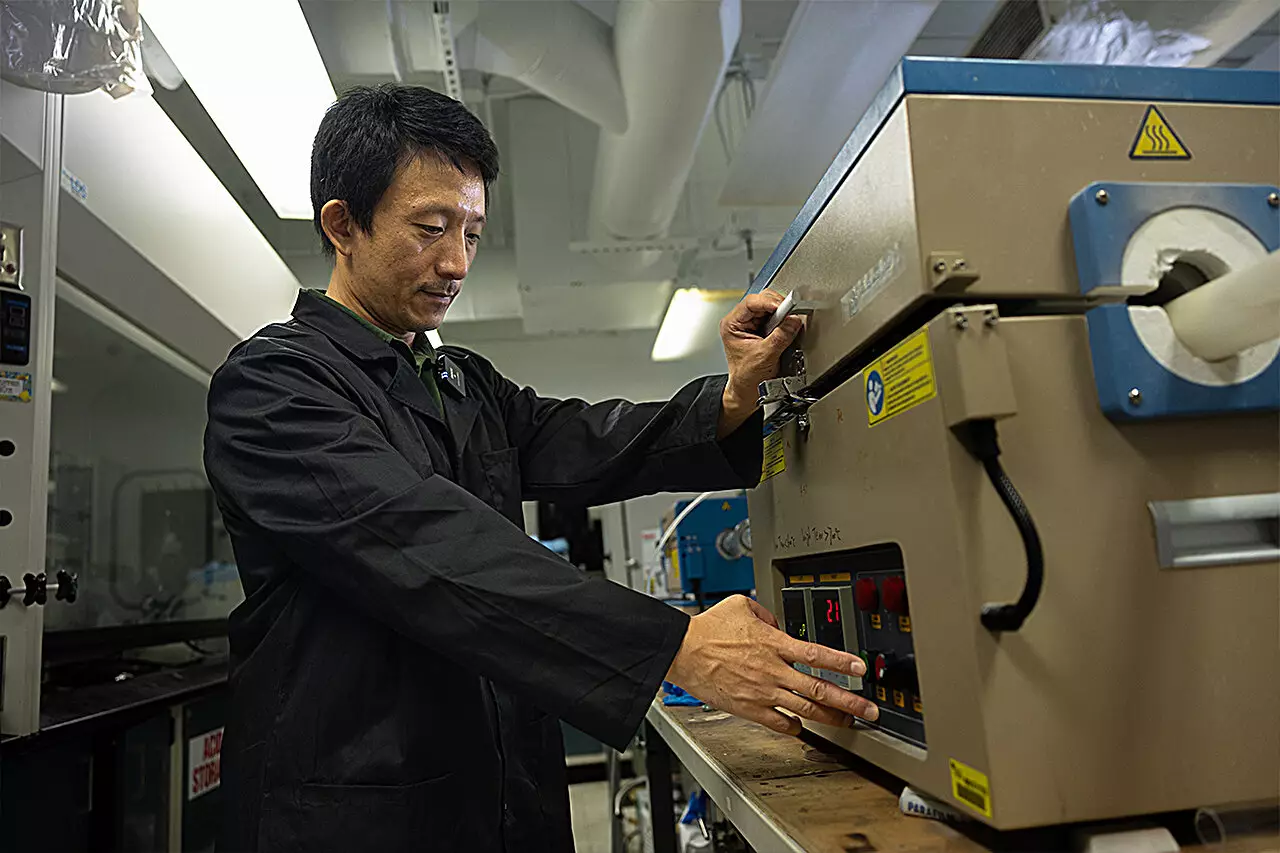As the climate crisis escalates, innovative technologies aimed at capturing carbon emissions are becoming critical. At the forefront of this effort is a groundbreaking initiative developed by a researcher at the University of Central Florida (UCF). Under the leadership of Yang Yang, an associate professor in the NanoScience Technology Center, this project focuses on a novel method to capture carbon dioxide (CO2) and convert it into valuable fuels and chemicals. This technology, which promises to address significant environmental challenges, demonstrates a blend of scientific ingenuity and natural inspiration.
Yang’s research is encapsulated in an advanced device specifically engineered to trap CO2 using a microsurface featuring a tin oxide film layered with fluorine. This design enables the capture of gaseous CO2 through a process utilizing a bubbling electrode. Upon capture, the device selectively transforms the CO2 into carbon monoxide and formic acid—chemical compounds with substantial applicability in industrial manufacturing. The recent publication of this research in the Journal of the American Chemical Society emphasizes its potential impact on reducing carbon footprints while offering a way to generate alternative energy sources.
This technology is particularly suited for implementation near high CO2 emitting sources like power plants, industrial factories, and chemical plants. By positioning the device at sites with high carbon emissions, it offers a dual benefit: capturing harmful emissions while simultaneously producing usable, eco-friendly chemicals.
The process of developing this device was informed significantly by natural phenomena. Yang draws parallels between the CO2 capture technology and the lotus plant, renowned for its hydrophobic surface that enables the quick runoff of water. By emulating this biological feature, the design ensures that water does not interfere with the conversion of CO2 during the process. The crucial balance of water management on the device’s surface is emphasized—too much water can lead to a detrimental production of hydrogen instead of the desired carbon-containing chemicals.
Yang’s perspective is a testament to the importance of bioinspiration in scientific innovation, highlighting how natural systems can inform technological advancements. By observing how plants and animals interact with their environment, researchers can develop more efficient methodologies for tackling human-induced problems.
At the heart of Yang’s system is the electrocatalytic carbon dioxide reduction reaction. This innovative process is capable of converting CO2 into various carbon-based chemicals, which can include methanol, methane, ethylene, and many others, dictated by the specific pathways employed in the reaction. Yang articulates a clear vision for the future, aspiring to create materials that can efficiently absorb CO2 and transform it into readily applicable chemicals. This could facilitate a significant reduction in atmospheric carbon concentrations while utilizing the output for diverse applications.
A major hurdle in this research has been managing the interaction of water with the catalytic materials. An excess of water around these materials can shift the reaction towards producing hydrogen, which compromises the efficiency of CO2 conversion. Yang’s innovative approach, which relies on hydrophobic materials, minimizes water’s presence and maximizes the efficiency of the carbon reduction process. This careful engineering could lead to a transformative shift in energy efficiency, ensuring that nearly all utilized electricity is dedicated to the desired reaction rather than byproducts.
The implications of this research extend beyond the laboratory. Yang envisions a future where his carbon capture technology serves as a competitive alternative to traditional and often slower, more expensive methods of CO2 reduction, such as afforestation or large-scale carbon capture solutions. Furthermore, the technology can harness sustainable energy sources like solar and wind, mitigating reliance on conventional energy while contributing positively to the environment.
Yang’s work is not a solo endeavor; it is built on collaboration with a diverse team from various institutions. The combined expertise from UCF’s Department of Materials Science and Engineering, and partnerships with universities such as Stanford and UC Berkeley underscore the multidisciplinary nature of this research.
Yang’s current efforts represent a foundational step toward larger-scale applications of CO2 capture and conversion that harness the lessons learned in preliminary studies. Future endeavors include advancing the technology into prototype stages, demonstrating its effectiveness in reducing atmospheric CO2 levels and generating usable chemicals efficiently.
The path ahead is ambitious, yet the fusion of research, natural inspiration, and technological innovation positions Yang’s work as a beacon of hope in the ongoing battle against climate change. As we move forward, such advancements are crucial for fostering a sustainable future where human activities align harmoniously with ecological balance.


Leave a Reply